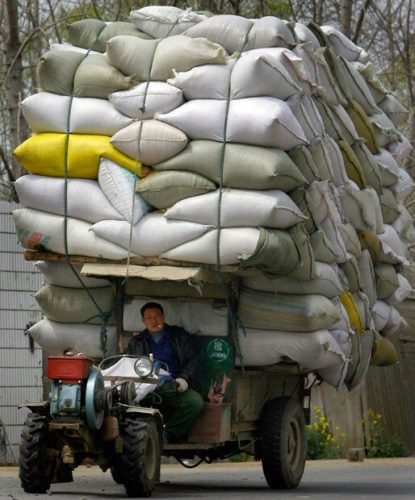
China’s bustling cities are synonymous with their signature delivery vehicles that keep the country’s e-commerce industry thriving. From the towering delivery vans to the nimble scooters, bicycles, and tricycles, these vehicles form the backbone of the efficient and prompt delivery services that millions rely on.
In the metropolises of Beijing, Shanghai, and Guangzhou, it is a common sight to see delivery vans navigating narrow streets, heavily loaded with packages and goods. Despite their immense size, these trucks are meticulously packed to minimize errors during operations, ensuring that deliveries reach their destinations intact and on time.

Scooters have emerged as the preferred choice for many delivery personnel due to their agility and ability to maneuver through congested urban areas swiftly. Laden with bulky bags and boxes, delivery riders adeptly weave through traffic, skillfully squeezing through gaps to achieve astonishing delivery efficiency.
Bicycles also play a crucial role in optimizing the delivery process. Equipped with spacious baskets or specially designed cargo carriers, delivery riders pedal tirelessly to transport packages, groceries, and even oversized items. Their nimbleness allows them to bypass traffic jams, enabling direct doorstep deliveries and providing a vital last-mile service.
In less urbanized areas and smaller towns, motor tricycles have gained popularity. These three-wheeled vehicles offer greater stability and cargo capacities, making them ideal for transporting bulkier items to remote locations with less favorable road conditions.

While the prevalence of overloaded delivery vehicles has undoubtedly contributed to the convenience of online shopping and prompt deliveries, it has raised concerns regarding road safety and environmental impact.
Overloaded vehicles pose risks not only to delivery drivers but also to other road users. Moreover, the increased emissions and congestion caused by these vehicles contribute to pollution and traffic challenges faced by urban centers.
Recognizing these issues, Chinese authorities have taken measures to address the problem of overloaded vehicles and enhance road safety. Stricter enforcement of weight limits, coupled with incentives for adopting more efficient and electric vehicles, aim to create a more sustainable and secure delivery ecosystem.

As China’s e-commerce industry continues to soar, striking a balance between efficient delivery operations and sustainable practices remains a top priority.
Logistics innovations, alternative delivery methods, and improved infrastructure are key factors that will shape the future of China’s crowded delivery vehicle scene.
By embracing these changes, the country can continue to support its booming e-commerce sector while minimizing its environmental impact and ensuring road safety for all.
